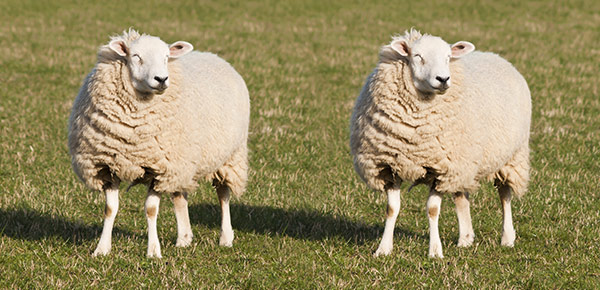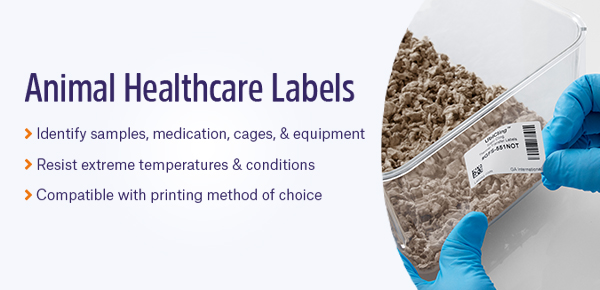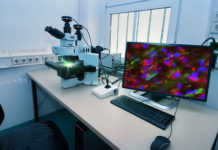 Beyond the general sci-fi concept, artificial cloning can be defined in several ways. It can refer to making an identical copy of a cell’s DNA, the propagation of a progenitor cell, or the artificial production of a genetically identical individual animal. Over the years, the evolution of animal cloning has led to several discoveries and advancements, with technology now having a substantial impact on livestock agriculture, human medicine, and animal conservation.
Beyond the general sci-fi concept, artificial cloning can be defined in several ways. It can refer to making an identical copy of a cell’s DNA, the propagation of a progenitor cell, or the artificial production of a genetically identical individual animal. Over the years, the evolution of animal cloning has led to several discoveries and advancements, with technology now having a substantial impact on livestock agriculture, human medicine, and animal conservation.
The history & development of animal cloning
Even without accounting for certain forms of cloning present in plants and invertebrates, examples of cloning exist throughout nature, the case of identical twins being a prime example. Scientists first began studying the process of artificial cloning at the turn of the last century, when a German scientist, Hans Adolf Eduard Driesch, began researching reproduction in salamanders. In 1902, he created a set of twin salamanders by dividing an embryo into two separate, viable embryos.1
Further studies on frogs in the 1950s and 1960s demonstrated the developmental plasticity of differentiated somatic cell nuclei and their ability to be dedifferentiated back into embryos.1 In the 70s, animal scientists adapted techniques such as embryo splitting and blastomere cloning in order to improve production efficiency and genetic advancement. While some of the early results obtained during this time remained controversial, partly due to difficulties in experimental reproducibility, they helped continue to grow the field of animal research.
The most significant breakthrough came in 1996, when researchers at the Roslin Research Institute in Scotland reported the first successful clone of a live lamb, the eponymous Dolly.1 Dolly was the first mammal to be cloned from somatic cells of an adult animal. Given that somatic cell nuclear transfer (SCNT) is well recognized for its low efficiency, the fact that a live lamb was produced with this method is astounding. The success of Dolly spurred researchers to consider new ways of modifying cells. Since Dolly, more animal clones have been produced, with preliminary experiments also performed using human cells. Stem cell research has even evolved to the point where it is now used for various therapeutics, including hair regrowth and the treatment of burn patients.
Animal cloning in a post-Dolly world
Since Dolly, progress has been made on cloning other species, including cattle, goats, pigs, and horses. However, nuclear replacement efficiency can vary significantly across species. The reported percentage of born progeny in cattle has increased from just 1% to near 20%, likely due to the development of enhanced nuclear replacement methods and better embryo culturing techniques.2 Unfortunately, while nuclear transfer has improved considerably, it is still far from optimal.
SCNT is plagued by a number of developmental abnormalities that occur in clones, referred to as “cloning-syndrome.”2 Animals are likely to suffer from a variety of disorders, such as high rates of pregnancy loss, prolonged gestation times, and higher post-natal mortality. Less than 67% of delivered clones survive until weaning. These deficiencies must be resolved before any large-scale animal cloning is practical or even tolerated. Ideally, pregnancy rates should be comparable to current livestock, achieved through normal sexual reproduction, which is 55% to 60%.3 Furthermore, clones that reach maturity can produce offspring of their own, through natural mating or assisted sexual reproduction with a non-clone partner.3 In these cases, conception, pregnancy, and survival were all within normal ranges. This shows that, at least for cloned animals that reach maturity, they are phenotypically no different than traditional livestock, including their ability to reproduce.
For animal cloning to truly become commonplace, these abnormalities need to be mitigated. The health and well-being of cloned animals must be on par with that of normally bred animals, a prime focus of many international groups presently working in the field.3 However, within the last few years, several companies have already begun to provide limited animal cloning services. This primarily involves companies that offer to clone pets at the cost of $25,00 to $100,000.
Ethical considerations & the future
Considering the wide range of motives for animal cloning and the types currently in development, the ethical terrain can be complex. There are two types of moral questions to ask: are there any negative consequences that derive from the cloning procedure, and does it violate any existing moral prohibitions or principles?4 The negative consequences of cloning should be eliminated or minimized to prevent potential abnormalities and ensure no undue suffering is placed on cloned animals. Regarding ethical concerns about “playing god’, there is the potential for false promises in the pet cloning industry, with companies possibly misleading owners by claiming that cloning will resurrect a beloved pet. A host of questions arise that need addressing, from moral permissibility to how the science is conducted and commercialized.4
Though there are many areas where cloning could be used for practical applications, there needs to be confidence in the long-term health status of cloned livestock and subsequent generations for artificial cloning to become commercially viable.3 Cloning technology for agriculture and medicine could grow once the safety of food products derived from clones and their offspring are adequately assessed. Primarily, cloning could provide the means to quickly and reliably disseminate superior genotypes in flocks and herds. Genotypes suited for certain environmental conditions and disease resistance could be introduced to ameliorate the health and survival of farm animals. In fact, clones of performance-tested animals can be produced and used as sires for widespread natural mating to provide an effective means of disseminating their superior animal genetics. Cloning can also be used to help preserve indigenous breeds of livestock, ensuring favorable traits are not lost from the global gene pool.
There are also some direct applications of cloning technology in human medicine, principally in therapeutic cloning. Artificial cloning can be used to generate healthy tissues for transplant using a patient’s own immunologically compatible cells. This tech can be used to treat various diseases and disorders, providing a lifelong treatment without the risk of tissue rejection. Moreover, research with cloning stem cells from humans shows great promise. Since stem cells can be reprogrammed to become any cell lineage, they can be used to repair or replace damaged tissue and help people suffering from spinal and other severe injuries.
LabTAG by GA International is a leading manufacturer of high-performance specialty labels and a supplier of identification solutions used in research and medical labs as well as healthcare institutions.
References:
- Wells DN. Animal cloning: problems and prospects. Rev Sci Tech. 2005;24(1):251-2
- Keefer CL. Artificial cloning of domestic animals. PNAS. 2015;112(29):8874-887
- Dinnyes A, Szmolenszky A. Animal cloning by nuclear transfer: state-of-the-art and future perspectives. Acta Biochim Pol. 2005;52(3):585-58
- Fiester A. Ethical issues in animal cloning. Perspect Biol Med Summer. 2005;48(3):328-3



